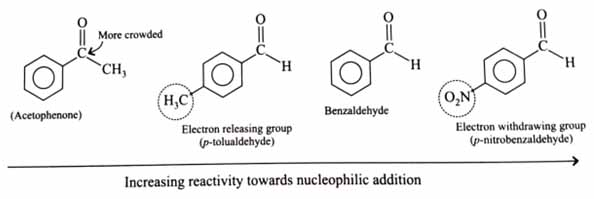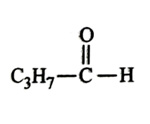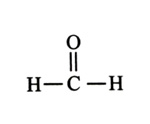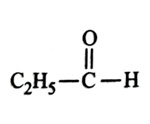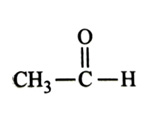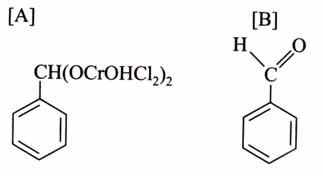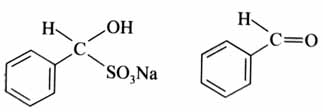Topic Question Set
Q 1
:
Which among the following aldehydes is most reactive towards nucleophilic addition reactions? [2024]
(2)
Reactivity of aldehydes and ketones is more in nucleophilic addition reactions if:
(i) Partial positive charge on carbonyl carbon is more, is attracted more and hence more is reactivity.
(ii) Lesser is crowding around carbonyl carbon, easier is it for to approach, hence more is reactivity.
Presence of alkyl groups around carbonyl carbon decreases partial positive charge of the carbonyl carbon due to effect of alkyl groups. Also, bulky alkyl groups hinder attack of on carbonyl carbon. Hence presence of alkyl groups around carbonyl carbon decreases reactivity of aldehydes/ketones towards nucleophilic addition.
Q 2
:
The compound formed by the reaction of ethanal with semicarbazide contains ______ number of nitrogen atoms. [2024]
(3)
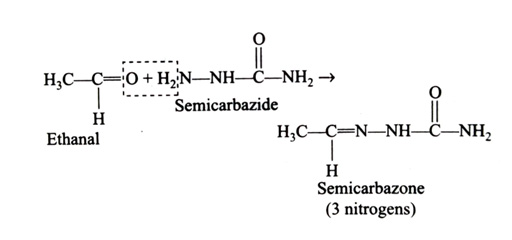
Q 3
:
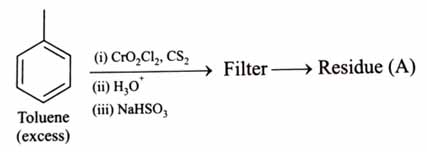
Residue (A) + HCl (dil) → Compound (B)
Structure of residue (A) and compound (B) formed respectively is: [2025]

(4)

Q 4
:
Given below are two statements: [2025]
Consider the following reaction

In the light of the above statements, choose the correct answer from the options given below:

Both Statement I and Statement II are false
Both Statement I and Statement II are true
Statement I is true but Statement II is false
Statement I is false but Statement II is true
(2)
Lesser is steric hindrance around C=O and more is partial positive charge on the carbon of C=O, easier is the attack by nucleophile.
Q 5
:
Which of the following arrangements with respect to their reactivity in nucleophilic addition reaction is correct? [2025]
p-nitrobenzaldehyde < benzaldehyde < p-tolualdehyde < acetophenone
acetophenone < p-tolualdehyde < benzaldehyde < p-nitrobenzaldehyde
benzaldehyde < acetophenone < p-nitrobenzaldehyde < p-tolualdehyde
acetophenone < benzaldehyde < p-tolualdehyde < p-nitrobenzaldehyde
(2)
Lesser is crowding around C=O and more is partial positive charge on carbon of C=O, more is reactivity of carbonyl compounds towards nucleophilic addition. Electron withdrawing groups increase partial positive charge and electron releasing groups decrease partial positive charge on C=O.
